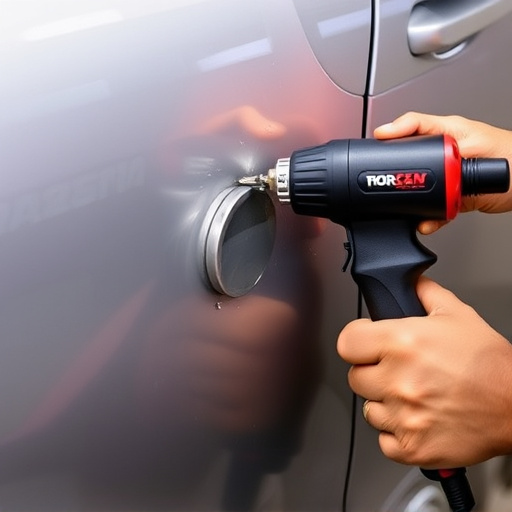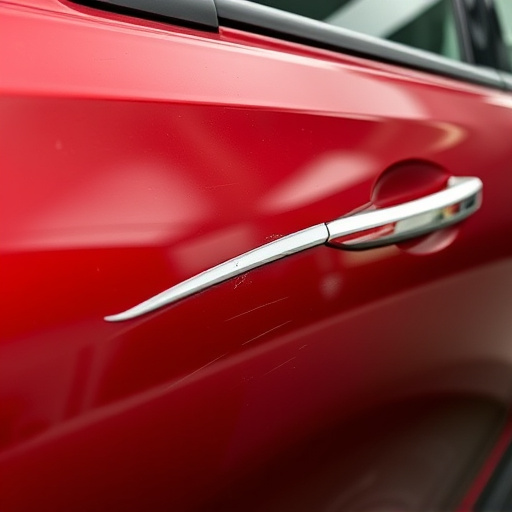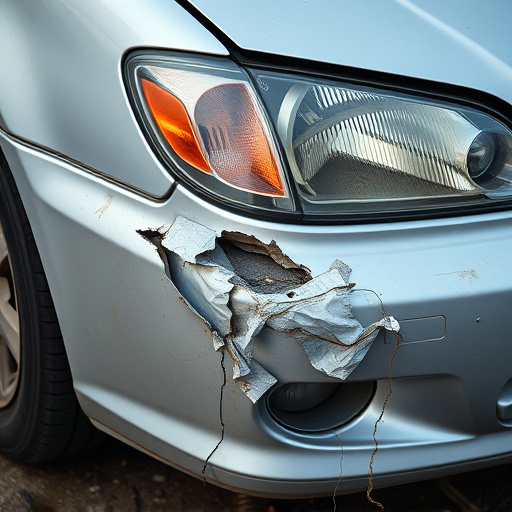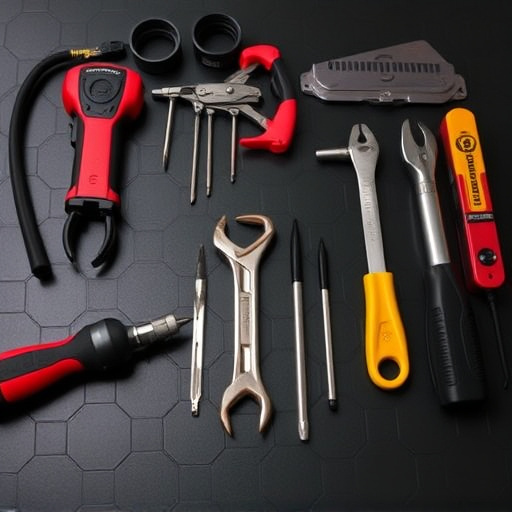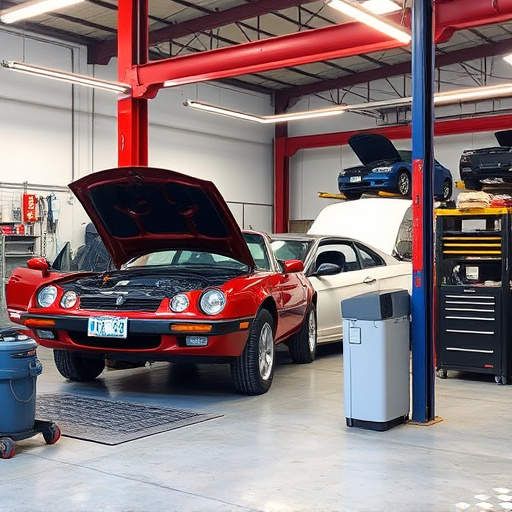Hand protection through high-quality gloves is crucial for technician safety equipment, especially in automotive industries. Specialized gloves mitigate risks from hazardous materials, sharp edges, and intense pressure, enhancing dexterity and overall restoration quality. Different glove types offer varying levels of chemical resistance, cut protection, heat insulation, and durability, catering to specific tasks. Investing in suitable gloves improves comfort, efficiency, and productivity while preventing injuries and ensuring optimal safety standards in vehicle restoration and collision repair services.
In the realm of technician safety equipment, hand protection stands as an indispensable component. Gloves aren’t just accessories; they are a vital shield against hazardous materials, sharp objects, and extreme temperatures encountered by technicians daily. This article delves into the crucial role of gloves and hand protection, exploring different glove types tailored to specific tasks and the importance of comfort and efficiency without compromising safety for our hardworking technicians.
- Understanding the Importance of Hand Protection for Technicians
- Types of Gloves and Their Applications in Technician Safety
- Ensuring Comfort and Efficiency While Prioritizing Safety
Understanding the Importance of Hand Protection for Technicians

Hand protection is a critical component of technician safety equipment, often overlooked yet indispensable in many industries, including automotive. Technicians, whether they are working on intricate auto bodywork in a collision center or engaging in meticulous auto body restoration, face unique risks that demand specific protective measures. Their hands, being extremely vulnerable and integral to their work, require special attention due to the frequent exposure to hazardous materials, sharp edges, and intense pressure.
Investing in suitable gloves as part of their technician safety equipment can significantly mitigate these risks. High-quality gloves designed for auto bodywork or collision center environments offer not just protection but also enhance dexterity, allowing technicians to perform tasks with precision. In the realm of auto body restoration, where intricate work and delicate materials are involved, specialized gloves ensure that every touch is gentle yet effective, contributing to the overall quality of the restoration process while prioritizing technician safety.
Types of Gloves and Their Applications in Technician Safety

In the realm of technician safety equipment, gloves play a pivotal role in safeguarding hands from various hazards encountered during work. The market offers an array of glove types tailored for specific applications, ensuring optimal protection and comfort. For instance, nitrile gloves are a popular choice in auto collision centers and dent repair services due to their superior resistance to chemicals often found in these environments, providing a reliable barrier against skin irritation and potential exposure to harmful substances.
When it comes to technician safety, different tasks demand distinct glove solutions. In addition to chemical protection, some gloves incorporate cutting-edge materials like Kevlar for enhanced durability against cuts and abrasions, especially useful in high-risk operations such as metal fabrication or working with sharp tools. Moreover, for technicians dealing with extreme temperatures, heat-resistant gloves are indispensable, preventing burns and ensuring comfort during tasks involving hot parts or welding processes, commonly found in collision centers.
Ensuring Comfort and Efficiency While Prioritizing Safety

Technician safety equipment, including gloves and hand protection, plays a pivotal role in enhancing both comfort and efficiency while prioritizing safety in various industries like vehicle restoration and collision repair services. Comfortable gloves not only ensure that technicians can grasp tools with ease but also minimize fatigue during prolonged work sessions, thereby improving overall productivity. Efficient handling of tasks is achieved through gloves designed for specific jobs, offering better grip, protection from sharp objects, and resistance to chemicals or heat—essential considerations in auto glass repair, among other specialized services.
Prioritizing safety is paramount, especially in high-risk environments where technicians might encounter hazardous materials or engage in delicate procedures. Hand protection, such as gloves made of durable and resistant materials, shields workers from injuries caused by cuts, burns, or exposure to harmful substances. By striking a balance between comfort, efficiency, and safety, the right pair of gloves empowers technicians to perform their tasks with confidence, ensuring the highest standards of quality in vehicle restoration and collision repair services.
Hand protection is an integral part of technician safety equipment, offering a simple yet effective barrier against potential hazards. By understanding the diverse range of gloves available and their specific applications, technicians can ensure they are well-prepared to work safely and efficiently in various environments. Choosing the right gloves not only protects against physical dangers but also enhances productivity, making hand protection a crucial aspect of any technician’s gear.
